| Country: | Russia, United States Of America |
| Period: | XX age |
Biography
Rachmaninoff was born in north-western Russia in Semyonovo in 1873. It is situated near Novgorod. His parents were talented pianists. In the age of four he got piano lessons from his mother. In 1882 Arkady Alexandrovich Rachmaninoff, the grandfather of musician, began to teach him.
Before moving to Moscow, Sergei studied at the Saint Petersburg Conservatory. He studied piano with a help of teachers such Alexander Siloti and Nikolai Zverev. Anton Arensky and Sergei Taneyev tought him harmony. Rachmaninoff was a bit lazy and issed most of his lessons. That’s why he studied at Zverev’s home.
As a young composer, he showed high talent in composition. He wrote the one-act opera Aleko when he was student. For this opera he got a gold medal in composition . At this time he was just 19 years old. He later became annoyed by the public's fascination with this piece.
Rachmaninoff met great composer Pyotr Ilyich Tchaikovsky in Moscow. He became an mentor of composer. He arranged a piano transcription of the suite from his ballet The Sleeping Beauty. For the fist time this commission was offered to Siloti. But then it was suggested to Rachmaninoff. And Siloti supervised the arrangement. Rachmaninoff relied on Zverev. He wanted to compose more, requesting a private silent room where he could compose his music. Zverev saw him only as a pianist and refused even to speak to him for several years. Rachmaninoff moved out from there and continued to compose.
Rachmaninoff got strong impression after dying of Tchaikovsky in 1893. He wrote a second Trio élégiaque to his memory. His First Symphony (Op. 13, 1896) was premiered on 27 March 1897 in one of a long-running series of "Russian Symphony Concerts". But it was criticized by critic and composer César Cui. There were also problems between Rachmaninoff and Russian Orthodox Church based on marriage on his cousin, Natalia Satina. It led him in depression for three years. At this period he didn’ compose the music. Savva Mamontov, famous Russian industrialist and patron of the arts, brought a light in ’s life. He established the Moscow Private Russian Opera Company. Rachmaninoff was offered the post of assistant conductor for the 1897-8 season. He accepted it. During Mamontov's opera company he also met the bass Feodor Chaliapin. This relationship grew into deep and long friendship.
Rachmaninoff began a course of psychological therapy with Nikolai Dah to make higher self-esteem of the composer in 1900. Ye came back to normal life soon. And the result of the psychological therapy was the composition of Piano Concerto No. 2 (Op. 18, 1900–01). The piece was very well received at its premiere, at which Rachmaninoff was soloist. He also was finally allowed to marry Natalia. They were married not far from Moscow on 29 April 1902 by an army priest. To circumvent the church they used the family's military background. In 1916 he had relationship with the 22-year-old singer Nina Koshetz, but his and Natalia's union lasted until the composer's death. Also he had another outstanding singer protégée. In 1911 he helped young Ksenia Derzhinskaia, who was Ossovsky's cousin, to begin her operatic career. As a result she became an talented singer and primadonna of the Bolshoi Theatre.
In 1904 Rachmaninoff was offered a job as conductor at the Bolshoi Theatre, but political views led to his resignation in March 1906. After that he stayed in Italy till July. Then he spent three winters in Dresden, composing, and returning to the family estate of Ivanovka every summer.
In 1909 Rachmaninoff had his first tour of the United States as a pianist. For this tour he composed the Piano Concerto No. 3 (Op. 30, 1909) as a calling card. This tour brought him a fame and peculiarity in America.
In 1915 died Alexander Scriabin, who studied with Rachmaninoff under Zverev. It affected Rachmaninoff so deeply that he went on a tour giving concerts exclusively devoted to Scriabin's music. He didn’t play his own music at all.
After Russian Revolution of 1917 Rachmaninoff left St. Petersburg. He went to Helsinki with his wife and two daughter, having only a few notebooks with sketches of his own compositions and two orchestral scores, his unfinished opera Monna Vanna and Rimsky-Korsakov's opera The Golden Cockerel. He was giving concerts in Scandinavia for a year. At the end of 1918, he got three offers of lucrative American contracts. He declined all of them. But one of them could help him in his complicated financial situation. He went to New York on 1 November 1918. Rachmaninoff chose an agent, Charles Ellis there. Also he accepted the gift of a piano from Steinway before playing 40 concerts in a four-month period. At the end of the 1919-20 season, he also gota contract with the Victor Talking Machine Company. He bought house in 1921 in USA and tried to recreate the atmosphere of Ivanovka there. He entertained Russian guests, employed Russian servants, and observed Russian customs.
From 1918 and 1943 (the date of his death) Rachmaninoff composed only six compositions. The main reason of it was homesickness. At this period he composes Rhapsody on a Theme of Paganini, Symphony No. 3 (Op. 44, 1935–36), Symphonic Dances (Op. 45, 1940). Eugene Ormandy and the Philadelphia Orchestra premiered the Symphonic Dances in 1941 in the Academy of Music.
In 1940 or 1941 he declined the suggestion to compose music for the British film Dangerous Moonlig.
In late 1942 Rachmaninoff fell ill during a concert tour. On 17 February he gave his last concert at the Alumni Gymnasium of the University of Tennessee in Knoxville, included Chopin's Second Piano Sonata, which contains the famous Funeral March. A statue called "Rachmaninoff: The Last Concert” now stands in World Fair Park. He became so ill after this recital that he had to return to his home in Los Angeles.
On 28 March 1943 Rachmaninoff died of melanoma, in Beverly Hills, California. It happened just four days before his 70th birthday. A choir sang his All Night Vigil at his funeral. He had wanted to be buried at the Villa Senar, but it was impossible becase of the War. He was interred on June 1 in Kensico Cemetery in Valhalla, New York.
The composer wrote five plays for orchestra and piano — four concerti and the Rhapsody on a Theme of Paganini. The Second and Third of the concerti are the most popular. Rachmaninoff composed three symphonies as well. The second and third symphonies are his greatest compositions. Other orchestral works are also famous. They are The Isle of the Dead (Op. 29), The Rock (Op. 7), Caprice Bohémien (Op. 12), and the Symphonic Dances (Op. 45).
Piano’s works consist of the Preludes, thirteen in Op. 32 and ten in Op. 23. Together with the Prelude in C-sharp minor (Op. 3, No. 2) from Morceaux de Fantaisie (Op. 3), they traverse all 24 major and minor keys. Especially difficult are the two sets of Études-Tableaux, Opp. 33 and 39, which are very demanding study pictures. Stylistically, Op. 33 hearkens back to the preludes, while Op. 39 shows the Scriabin’s influence. There are also the Variations on a Theme of Chopin (Op. 22), the Six Moments Musicaux (Op. 16), , and the Variations on a Theme of Corelli (Op. 42). He composed two piano sonatas,. They are virtuosic and large scale in their technical demands. Rachmaninoff also wrote works for two pianos, four hands, including two Suites (the first subtitled Fantasie-Tableaux), a version of the Symphonic Dances (Op. 45), and an arrangement of the C sharp minor Prelude. He also composed a Russian Rhapsody and arranged his First Symphony (below) for piano four-hands. These works were published after his death.
Rachmaninoff composed two major a cappella choral works— the All-Night Vigil (another name is the Vespers) and the Liturgy of St. John Chrysostom. Other choral works include The Bells, a choral symphony, Three Russian Songs, the Spring Cantata and an early Concerto for Choir (a cappella). He also finished three operas, Aleko, The Miserly Knight, and Francesca da Rimini. He started opera Monna Vanna in 1907, based on a work by Maurice Maeterlinck, but didn’t complete it. It was finished by Igor Buketoff and in 1984 it was shown.
His chamber music includes two piano trios. They are named Trio Elégiaque (the second trio is a memorial tribute to Tchaikovsky), and a Cello Sonata. The piano dominated in his chamber music. Rachmaninoff also wrote many songs for piano and voice, to texts by Aleksey Tolstoy, Johann Wolfgang von Goethe, Aleksandr Pushkin, Victor Hugo , Percy Bysshe Shelley, and Anton Chekhov. Among his most famous songs is the wordless Vocalise.
Composer’s style was influenced by Tchaikovsky. In the middle of 1980s he began using his own style. His First Symphony has many original features. Its uncompromising power of expression and brutal gestures were unprecedented in Russian music at the time. Its sweeping lyricism, flexible rhythms and stringent economy of thematic material were all features he would keep and refine in subsequent works. Later composer's style began developing significantly. Rachmaninoff's orchestration became more varied and subtler, with contrasts and his composing on the whole became more concise.
Especially important is Rachmaninoff's use of unusually wide-spread chords for bell’s sounds. Rachmaninoff' was fond of Russian Orthodox chants as well. He used them most perceptibly in his Vespers. The beginning of melody of the First Symphony is came from chants. It’s especially prevalent in The Isle of the Dead, The Bells, the Rhapsody on a Theme of Paganini, and in others his symphonies.
Rachmaninoff had great command of fugal writing and counterpoint, because his studies with Taneyev. Very characteristic of his writing is chromatic counterpoint. This talent was paired with a confidence in composing in large- and small-scale forms. The Third Piano Concerto shows a structural ingenuity. Each of the preludes grows from a tiny melodic or rhythmic fragment into a powerfully evocative miniature, taut,, crystallizing a particular mood or sentiment while employing a complexity of texture, rhythmic flexibility and a pungent chromatic harmony.
Rachmaninoff's writing style changed before the October Revolution deprived him of his homeland. The harmonic composition in The Bells (wrote in 1913 but published in 1920) became as advanced as in any of the works Rachmaninoff would write in Russia, partly because the melodic material has a harmonic aspect which arises from its chromatic ornamentation. Changes are apparent in the revised First Piano Concerto. He finished it before leaving Russia, as well as in Op. 39 Études-Tableaux and the Op. 38 songs In these sets the composer was less concerned with pure melody than with coloring. Rachmaninoff's near-Impressionist style perfectly matched the texts by symbolist poets. The Op. 39 Études-Tableaux it the most demanding pieces he wrote for any medium, both technically and in the sense that the player must see beyond any technical challenges to a considerable array of emotions, then unify all these elements.
Vladimir Wilshaw, who was the friend of Rachmaninoff', noticed this compositional change continuing in the early 1930s, with a difference between the sometimes very extroverted the Variations on a Theme of Corelli (Op. 42, 1931) and Op. 39 études (the composer had broken a string on the piano at one performance). The variations show an even greater textural clarity than in the Op. 38 songs, matched with a more abrasive use of chromatic harmony and a new rhythmic incisiveness. It characterized of all his later compositions— the Piano Concerto No. 4 (Op. 40, 1926) is wrote in a more emotionally introverted style, with a greater clarity of texture. Some of his most beautiful (melancholy and nostalgic) and melodies occur in Rhapsody on a Theme of Paganini, the Third Symphony, and Symphonic Dances.
The reputation of Rachmaninoff had variety opinions. The 1954 edition of Grove's Dictionary of Music and Musicians notoriously changed his music as "monotonous in texture… consisting mainly of artificial and gushing tunes" and predicted that his popular success was "not likely to last". To this, Harold C. Schonberg, in his Lives of the Great Composers, responded, "It is one of the most outrageously snobbish and even stupid statements ever to be found in a work that is supposed to be an objective reference."
The Conservatoire Rachmaninoff, as well as streets in the cities of Veliky Novgorod and Tambov he used to visit, were named after the composer.
The composer wrote virtuosic piano technique. His playing was marked by precision, a refined legato, rhythmic drive and an ability of maintaining complete clarity when playing compositions with complex textures. His music was influenced by Chopin, especially the B flat minor Piano Sonata.
Rachmaninoff' was one of the best Romantic composers. Composer always used the basic metric pulse and he varied it all the time. Harold C. Schonberg suggests the young Vladimir Horowitz might have gotten this kind of rhythmic snap from Rachmaninoff. Composer's playing had musical elegance with melodically line. Rachmaninoff's playing includes aristocratic, a masculine kind of poetry. He never was sentimental.
Rachmaninoff easily maneuver through the most complex chordal configurations. The technique of his left hand was very powerful. Composer's textures were crystal clear all the time. Józef Hofmann was the one who shared this kind of clarity with Rachmaninoff. They used Anton Rubinstein’s model for this variety of playing.
Rachmaninoff is considered one of the most accurate of pianists. Artur Rubinstein said:
He had the secret of the golden, living tone which comes from the heart ... I was always under the spell of his glorious and inimitable tone which could make me forget my uneasiness about his too rapidly fleeting fingers and his exaggerated rubatos. There was always the irresistible sensuous charm, not unlike Kreisler's'.
Coupled to his tone was a vocal quality not unlike that of Chopin's playing. With the composer’s wide operatic experience, he was a fan of singing. With the stories he told at the keyboard came multiple voices—a polyphonic dialog. In 1940 he recorded his transcription of the song "Daisies". On the recording, separate musical strands enter as if from various human voices in eloquent conversation. It came from an unusual independence hands of and fingers.
The composer possessed an uncanny memory as well. Rachmaninoff's could play any symphony after hearing it. Siloti would give him a long and demanding piece to learn, such as Brahms' Variations and Fugue on a Theme by Handel. Two days later the composer would play this symphony "with complete artistic finish." Alexander Goldenweiser wrote, "Whatever composition was ever mentioned—piano, orchestral, operatic, or other—by a Classical or contemporary composer, if Rachmaninoff had at any time heard it, and most of all if he liked it, he played it as though it were a work he had studied thoroughly."
The composer always planned his performances accurately. He based his theory that each piece of music has a "culminating point." Regardless of where that point was or at which dynamic within that piece, the performer had to know how to approach it with absolute calculation and precision; otherwise, the whole construction of the piece could crumble and the piece could become disjointed. This practice he got from Feodor Chaliapin, who was his friend. Although the composer often sounded like he improvised he actually wasn’t. His interpretations comprised mosaics of tiny details. These mosaics got together in performance and they might, according to the tempo of the piece being played, fly past at great speed, giving the impression of instant thought.
The most advantage of the composer was in approaching the pieces he played from the perspective of a composer rather than that of an interpreter. Rachmaninoff' thought "interpretation demands something of the creative instinct. If you are a composer, you have an affinity with other composers. You can make contact with their imaginations, knowing something of their problems and their ideals. You can give their works color. That is the most important thing for me in my interpretations, color. So you make music live. Without color it is dead." He possessed a sense of structure far better than many of other composers, such as Hofmann, or the majority of pianists from the previous generation, judging from their respective recordings.
The composer's performance is more taut and concentrated than Grainger's. The monumental conception and Russian's drive bear a big difference to the Australian's more delicate perceptions. Grainger's textures are elaborate. Rachmaninoff shows the filigree as essential to the work's structure, not simply decorative.
The great composer had extremely large hands with a gigantic fingers. This helped him to be a good pianist. He was very high as well. The composer's slender frame, narrow head, long limbs, prominent ears, and thin nose leads to the thoughts that he may have had Marfan syndrome. This syndrome would have accounted for several minor ailments he suffered all his life. These included arthritis, back pain, eye strain and bruising of the fingertips.
Most of composer's recordings are famous classics. Rachmaninoff was first recorded by Edison Records on their "Diamond Disc" records. After that they claimed the best audio fidelity in recording the piano. Edison, didn't care for Rachmaninoff's playing and referred to him as a "pounder". Rachmaninoff believed his own performances to be variable in quality and requested that he be allowed to allow any recordings for commercial purpose Edison agreed but still issued multiple takes, a common practice in the gramophone record industry at the time. It made the composer angry and he left Edison and in 1920 got a contract with the Victor Talking Machine Company. The company was pleased to comply with Rachmaninoff's restrictions, and proudly advertised him as one of their great recording artists. He was recorded by Victor continued till 1942, when the American Federation of Musicians imposed a recording ban in the U.S.
He recorded his four piano concertos with the Philadelphia Orchestra with two versions of the second concerto with Leopold Stokowsk, and a world premiere recording of the Rhapsody on a Theme of Paganini.. The first, third, and fourth concertos were recorded with Eugene Ormandy. Rachmaninoff also made three recordings conducting the Philadelphia Orchestra in his own Third Symphony, his orchestration of Vocalise and his symphonic poem Isle of the Dead.
The composer was also involved in various ways with music on piano rolls. Several manufacturers, and in particular the Aeolian Company, had perforated his compositions on music rolls from about 1900 onwards. Sofia Satina, his sister-in-law, remembered him at the family estate at Ivanovka, pedalling gleefully through a set of rolls of his Second Piano Concerto, apparently acquired from a German source, most probably the Aeolian Company's Berlin subsidiary, the Choralion Company. Aeolian in London created a set of three rolls of this concerto in 1909. It remained in the catalogues of its various successors till the late 1970s.
Rachmaninoff made 35 piano rolls (12 of them were his own compositions), for the American Piano Company (Ampico)'s reproducing piano. Rachmaninoff' initially disbelieved that a roll of punched paper could provide an accurate record, so he was invited to listen to a proof copy of his first recording. After the concert he said "Gentlemen — I, Sergei Rachmaninoff, have just heard myself play!" For demonstration purposes, he recorded the solo part of his Second Piano Concerto for Ampico, though only the second movement was used publicly and has survived. He recorded till 1929, though his last roll, the Chopin Scherzo in B-flat minor, wasn’t published until October 1933.







![Russian legends - Leonid Kogan [10 CD]](http://static.classicalm.com/repository/collection-cover/small/269-img1318707830156876.jpg)
![Russian legends - Emil Gilels [16 CD]](http://static.classicalm.com/repository/collection-cover/small/261-img1318115683212190.jpg)
![Russian legends - Evgeny Kissin [9 CD]](http://static.classicalm.com/repository/collection-cover/small/265-img1318196902541222.jpg)
![Russian legends - David Oistrakh [20 CD]](http://static.classicalm.com/repository/collection-cover/small/267-img1318418713553266.jpg)
![Steinway Legends - Martha Argerich [2 CD]](http://static.classicalm.com/repository/collection-cover/small/237-img1316861995833914.jpg)
![Steinway Legends - Vladimir Ashkenazy [2 CD]](http://static.classicalm.com/repository/collection-cover/small/243-img1316892092545040.jpg)










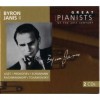



![Russian legends - Daniel Shafran [7 CD]](http://static.classicalm.com/repository/collection-cover/small/277-img1319146356180506.jpg)








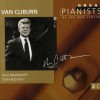






















![Martha Argerich and Friends: Live from Lugano 2011 [CD 2 of 3]](http://static.classicalm.com/repository/disk-cover/small/1863-img1344865303495286.jpg)



![Martha Argerich Edition - Solos & Duos [CD4of6]](http://static.classicalm.com/repository/disk-cover/small/3584-img1404479548873390.jpg)






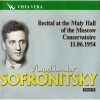
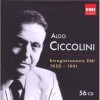




























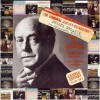























![Helene Grimaud - The Piano Collection [CD1of5]](http://static.classicalm.com/repository/disk-cover/small/3553-img1403789327261273.jpg)
![Helene Grimaud - The Piano Collection [CD2of5]](http://static.classicalm.com/repository/disk-cover/small/3554-img1403789506538320.jpg)
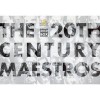
![Rostropovich - Mastercellist [CD2of2]](http://static.classicalm.com/repository/disk-cover/small/3702-img1407155736668324.jpg)
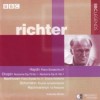




































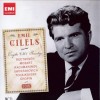



![The Complete Josef Hofmann, Volume 2 [2 CD]](http://static.classicalm.com/repository/disk-cover/small/827-img1316005912356728.jpg)
![The Complete Josef Hofmann, Volume 3 [2 CD]](http://static.classicalm.com/repository/disk-cover/small/829-img1316006934873331.jpg)
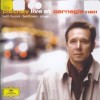

![The Complete Josef Hofmann, Volume 5 [2 CD]](http://static.classicalm.com/repository/disk-cover/small/833-img1316020224372818.jpg)


![The Complete Josef Hofmann, Volume 8 [2 CD]](http://static.classicalm.com/repository/disk-cover/small/839-img1316026485683685.jpg)

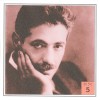



![Richter in Hungary, Volume 4 [2 CD]](http://static.classicalm.com/repository/disk-cover/small/883-img1316380039653451.jpg)
![Richter in Hungary, Volume 7 [2 CD]](http://static.classicalm.com/repository/disk-cover/small/889-img1316387569300945.jpg)

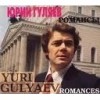








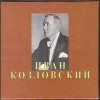
![The Heifetz Collection, Volume 5 [2 CD]](http://static.classicalm.com/repository/disk-cover/small/723-img1315251789683087.jpg)
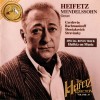

![The Heifetz Collection, Volume 46 [2 CD]](http://static.classicalm.com/repository/disk-cover/small/1001-img1318023469472305.jpg)

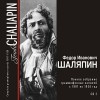
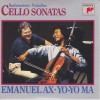

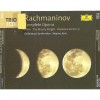















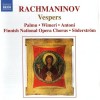

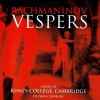
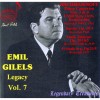

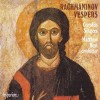

















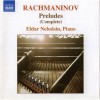





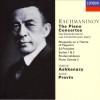




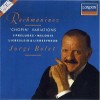


















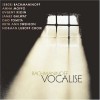

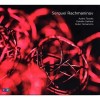























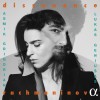








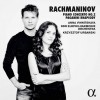















![Rachmaninov - His Comolete Recordings [RCA]](http://static.classicalm.com/repository/composition-cover/small/43366-img1649673388532378.jpg)








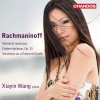








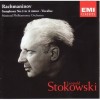










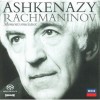
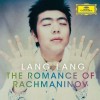






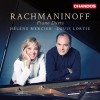







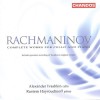



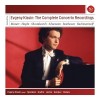















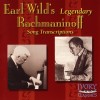



















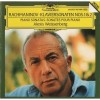







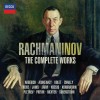




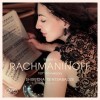










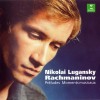
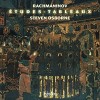




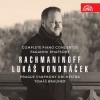
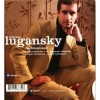





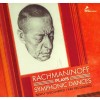


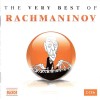

![Rachmaninov - [Quadromania]](http://static.classicalm.com/repository/composition-cover/small/20474-img1407078590111543.jpg)



















